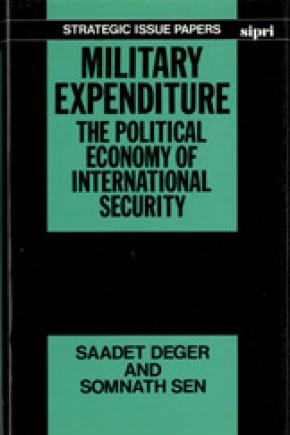Military Expenditure: The Political Economy of International Security
This book analyses world military expenditure at the end of the 1980s and discusses its political and economic implications. After a decade of unprecedented expansion, the level of world military spending is now falling, although modestly. Political developments in Europe and the success of arms control negotiations raise hopes for further reductions. Technological and economic structural disarmament is also adding to the pressure for reductions. However, performance has not matched up to promises, and formidable obstacles to limitations on defence spending still remain. The book surveys recent events and describes the process of change that characterizes world military expenditure and its determinants at this time of transformation.
About the authors
Dr Saadet Deger is Senior Researcher and Leader of the SIPRI world military expenditure project. She was formerly a Research Fellow at Birkbeck College, London (1977–87) and a member of the UN Working Group of Experts for the UN Regional Centre for Peace and Disarmament in Africa. She is currently a member of the board of Defence Economics: An International Journal. She is the author of Military Expenditure in Third World Countries: The Economic Effects (1986) and co-editor of Defence, Security and Development (1987). She has published articles for international journals on disarmament and development, the economics of security in the Third World, and the arms trade, and is the author of chapters in the SIPRI Yearbooks 1988, 1989, and 1990.
Dr Somnath Sen is a Researcher on the SIPRI world military expenditure project. He is currently on leave from a Senior Lecturership at the University of Birmingham. His publications include Protectionism, Exchange Rates and the Macroeconomy (1985), several articles on disarmament and development and macroeconomics and a chapter in the SIPRI Yearbook 1990.
1. Introduction: The end of a decade
2. European NATO: Change or continuity?
3. The EC: Community and security
4. Eastern Europe: New beginnings
5. The United States: Dollars and deficits
6. The Soviet Union: Glasnost and perestroika
7. The Asia-Pacific region: The emerging powers
8. The Third World: Conflict resolution
9. The debt crisis: Rconomic security
10. Conclusion: The disarmament dividend
Appendix A. Tables of world military expenditure
Appendix B. Sources and methods

